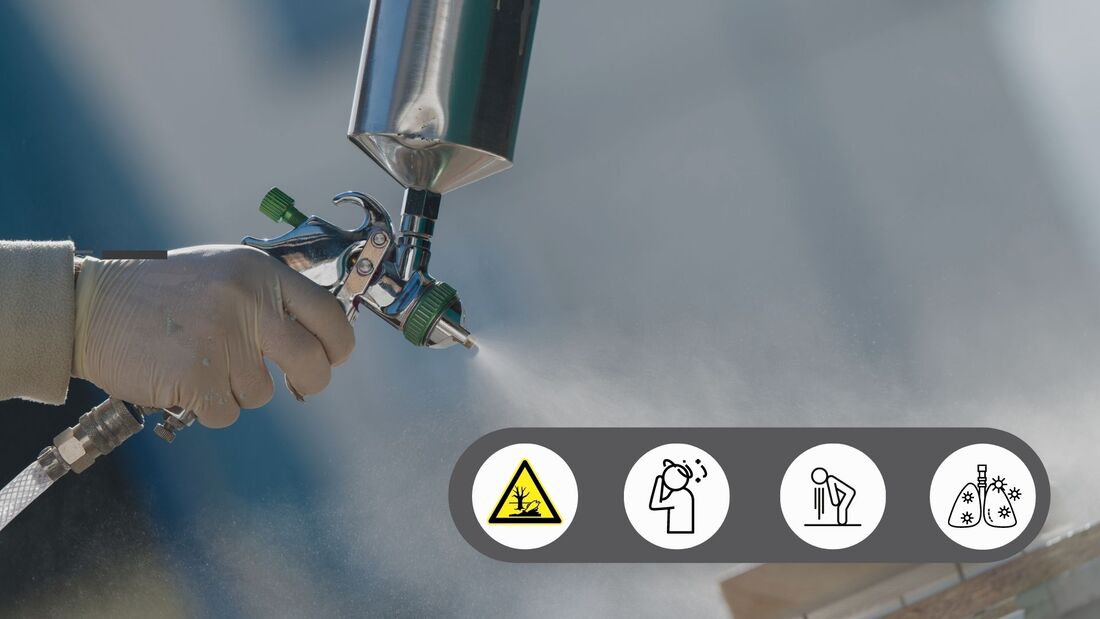|
In May 2021, the European Commission launched a grand vision called the EU Action Plan, a bold initiative designed to pave the way for a cleaner, healthier world. The action plan, "Towards a Zero Pollution for Air, Water and Soil," was an essential step towards fulfilling the European Green Deal's ambitious goal of creating a toxic-free environment by the year 2050. In order to achieve this critical goal, we need to reduce air, water, and soil pollution to the point where it no longer threatens human health or natural ecosystems, while remaining within the planet's boundaries.(1) As noble as this vision may be, many industries, such as industrial surface maintenance, face a significant hurdle in achieving this goal. For example, the upkeep of storage tanks is an ongoing battle against the corrosive effects of their surroundings, with the coating application being the most effective way to protect them. However, traditional coating methods like manual spraying and rolling have proved far from perfect, with quality and consistency being consistent issues. To make matters worse, these techniques generate a substantial amount of paint waste. This type of waste is usually classified as "hazardous" due to the presence of toxic and harmful chemicals, such as heavy metals like lead, cadmium, chromium (mainly in older paints and in some anti-fouling paints), and volatile organic compounds (VOCs), which can cause severe health and environmental problems. (2),(3) In addition, paint itself is in large part made of plastic polymers (on average 37%). Paint appears as the largest source of microplastic leakage into the Ocean & Waterways (1.9 Mt/year), outweighing all other sources of microplastic leakage (e.g. textiles fibres and tyre dust). This means that not only is paint waste harmful due to the presence of toxic chemicals, but it is also contributing to the growing problem of microplastic pollution in our oceans and waterways. (4) The dangers of paint waste in current industrial painting processes It is important to understand that paint waste is generated at various stages of the painting process, from surface treatment to paint application and equipment cleaning. The waste can be in the form of excess paint, overspray, contaminated water, and solvents. For instance, when using a roller for painting application, the roller will distribute the paint depending on the applied pressure. It also results in an uneven coating thickness and poor-quality finishes. Consequently, painters may compensate for uneven application by adding more paint to the missed pots or insufficient coverage. Too much paint on the roller ends can result in splatters as the painter rolls them across the surface. The fallen paint droplets can also contaminate the site's grounds and soil. Although coating with a spray gun is more efficient in terms of speed and coverage, it still generates a significant amount of paint waste because it produces a large volume of paint in a short amount of time, often more than what is required to cover the surface. But then, what happens to the paint particles that do not make it to the asset's surface? The paint mist could drift away with the wind and contaminate soil, water bodies or any natural reserves nearby and far away from the site. To summarize, improper paint waste management from either coating application method can lead to detrimental environmental impacts, including soil, water, and air pollution. If not adequately disposed of, paint waste can seep into the soil, contaminate groundwater, pollute bodies of water, and disrupt aquatic life and ecosystems. In addition, incinerating paint waste can release harmful gases and particulate matter into the air, contributing to air pollution and respiratory problems. Managing paint waste in responsible ways In addition to its environmental impact, paint waste can also have economic consequences for businesses. Disposing of hazardous waste is costly and requires specialized equipment and procedures. Failing to manage paint waste properly can result in fines, legal liabilities, and damage to the reputation of businesses. Therefore, it is of utmost importance for businesses to responsibly handle the disposal of paints and solvents. The best way to dispose of paint products is to take them to a site designated for hazardous materials. Individuals and businesses can stay informed by searching for "hazardous waste disposal sites near me" or visiting the local government website for more information and relevant regulations. Furthermore, the excess paint can also be processed for re-use through paint consolidation, or it can also be separated and processed for resale. (5) (6) When contaminants spill during coating operations, it is strongly advised to perform a dry clean-up rather than spraying the affected area with a hose, which can spread the contaminants and increase the likelihood of them reaching the drainage system. (7)
|
Authors
We will share different technology advances, innovations or knowledge from members of our team. |
|
MORE INFORMATIONChamber of Commerce: 69486549
Tax number: NL857890852B01 Qlayers has a Privacy Policy
|








